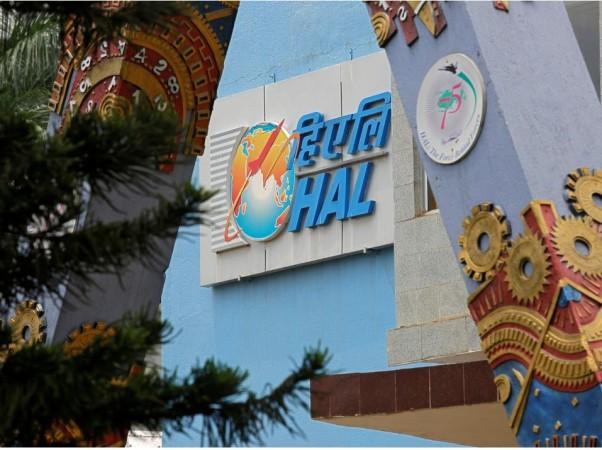
The recent announcement that HAL has signed a ₹6,000-crore contract with GE for 113 F404-GE-IN20 turbofan engines destined to power 97 of the Indian Air Force's (IAF) latest Tejas Mk1A fighters is a significant step in India's aerospace journey. Yet, viewed through the wider lens of strategic competition, force structure, unmanned systems, missile networks and space-enabled warfare, this deal is best understood as a bridge rather than an endpoint.
There's a need to the deal in the context of holistic perspectives, grounded in evidence, expert commentary and data including strategic posture and future readiness.
1. Capability urgency: Fleet numbers and quality
India faces an urgent need to replenish and expand its fighter fleet. The Tejas Mk1A order follows the IAF's earlier contract for 97 jets, its largest indigenous fighter order to date. The HAL-GE engine deal ensures the supply line for the Tejas Mk1A production schedule. Without engine assurance, production cadence stalls, defeating the very purpose of the aircraft order.
Nevertheless, the engine selected the F404 is an interim solution: reliable, proven, but not cutting-edge. It provides continuity and avoids capability collapse, but the major question remains: will the force of 2030-35 be built on today's incremental steps or tomorrow's leap-them-forward platforms?
As the think-tank commentators at the Institute for Defence Studies and Analyses (IDSA) note, "true sustainability lies in going indigenous" even as imports bridge near-term gaps. The urgency also aligns with IAF doctrine adjusting for multi-front challenge: western border with China, northern front with Pakistan, and expeditionary commitments across the Indian Ocean Region.
2. Engine sovereignty and propulsion bottlenecks
The HAL–GE deal unlocks production of 113 engines, but the bigger structural issue is India's historical weakness in indigenous jet‐engine design and manufacture. The 2025 MP-IDSA monograph on the Kaveri engine programme highlights that, despite years of efforts, India is still targeting only 70-75 kN thrust for the base Kaveri engine whereas modern platforms demand significantly more. Another article outlines that India is pressing ahead with "Mission Aero Engine" to develop a 110 kN class indigenous engine.
The reliance on GE's F404 (and the upcoming co-production of F414) is thus not merely tactical it is strategic. It underscores the vulnerability of a defence system that is dependent on foreign engines. As IDSA emphasizes, the India US jet engine deal is "a major milestone" in defence cooperation precisely because propulsion is often the Achilles-heel of advanced aviation programmes. Looking ahead, India must pivot from licensed production to co-development and full technology absorption of the next-gen propulsion systems.
3. Manned-Unmanned force architecture: The networked future
Air superiority in the 2030s will not simply be about how many fighters you have, but about how effectively you integrate manned platforms, unmanned wingmen, drones, sensors, networked fire-power, and space/ISR assets. The Tejas Mk1A and its engine deal address the manned side of the ledger but only partially.
What is also required is a robust cadre of armed unmanned aerial vehicles (UAVs), loyal wingman drones, persistent intelligence/surveillance/reconnaissance (ISR) platforms, and machine-decision-aided mission systems. These enable both "attrition warfare" and "decision-dominating warfare." India is developing UAVs and UCAVs (e.g., the Ghatak UCAV), but expert commentary shows India's ecosystem still trails the pace of global innovation.
Put differently: having a fleet of Tejas Mk1As is critical but will be most valuable when integrated into a multi-layered air architecture combining manned fighters, unmanned assets, long-range sensors and networked weapons. That architecture is what will determine air-dominance in contested environments, not just the engine under the hood.
4. Missile mix, standoff, and integrated fires
Modern air warfare is increasingly about standoff engagements engaging the enemy at range before one's own assets come under fire. It is about integrating fighters, drones, space sensors, and missiles into a network of fire.
India has made progress: indigenous missiles such as the Astra Mk I and Mk II, BrahMos-A (air-launched variant), and Smart Anti-Airfield Weapon (SAAW) are in advanced states. But as global comparisons show, adversaries are also advancing. For example, China deploys PL-15 and other long-range air-to-air missiles; Pakistan is integrating Chinese systems via its deep arms imports 81 % of which come from China per SIPRI data.
The engine deal contributes by enabling Tejas Mk1A integration into such missile-networks and enables fleet build-out but it does not on its own guarantee the requisite weapon-sensor-data-fire network. India's strategic objective must be not just more aircraft, but more connected aircraft with networked weapons.
5. Spatial domain: From air to space & data grids
Increasingly, airpower is only as effective as the space and data grid that supports it: ISR satellites, communication nodes, early warning, augmented reality cockpits, quantum links and resilient C4ISR. China is rapidly expanding space-linked capabilities and tying them into its force posture. The January 2025 SIPRI yearbook notes China's nuclear arsenal at ~600 warheads, a message of how its strategic layer overlaps air/space domains.
India's strides in satellite launches, ASAT capabilities and space situational awareness are commendable but the linkage into the air-combat domain is still emerging. For the Tejas fleet and beyond, India needs to build robust space-air-cyber integrated battle systems, such that a fighter's sensors are fed by a satellite or UAV data-bus in real time, with decision latency measured in seconds, not minutes. Without this, numerical or platform advantages risk being nullified by networked adversary systems.
6. Regional comparison: China, Pakistan, Bangladesh
China: With a massive air fleet, developing fifth-generation stealth fighters (J-20, J-35) and advanced UCAVs, China is setting the pace. A recent SIPRI submission warns that Russian-Chinese arms trade, including Su-35 deliveries, could "alter the balance of power between India and China." China also leverages scale, engine development (WS series) and a force-multiplying space-air-maritime architecture.
Pakistan: Deeply reliant on Chinese arms (81 % of its imports), Pakistan is modernising with JF-17/Block III, J-10CE jets and Chinese missile/air defence suites. Pakistan's approach emphasises lower-cost, asymmetric risks (drones, missiles, cyber) rather than mass fighter fleets but just because the focus is asymmetric does not make it any less significant.
Bangladesh: Though smaller in scale, Bangladesh has engaged China for J-10C and other systems, and is implementing "Forces Goal 2030" (modernisation). A 2024 India Today article flagged Bangladesh's acquisition plans and the need for India to monitor its eastern flank.
In short: India retains quantitative and qualitative lead, but the margin is narrowing in certain domains (engines, networked weapons, unmanned systems). The HAL–GE deal underpins India's near-term edge but the structure of competition has shifted.
7. Industrial ecosystem and self-reliance
The HAL–GE engine order is also an industrial signal. It sustains HAL's production lines at Bengaluru/Nashik and ensures suppliers and MSMEs continue to engage. Pre-orders of this size are essential to maintain workforce continuity and supply-chain stability.
Yet the bigger challenge lies ahead: scaling indigenous design and production of aero-engines, UAVs, digital avionics, and missiles. The roadmap for India's indigenous engine development (Kaveri 2.0/3.0) outlines a 2025-2040 timeline to deliver 90–100 kN and 110–125 kN class engines. Achieving this will require ramped investment, world-class testing infrastructure, and sustained political/industrial commitment something analysts at MP-IDSA observe has historically suffered from delays.
From a board-room perspective for HAL and its ecosystem, the strategic imperative is to transition from "licensed manufacture" to "design-house and export-competitor." The engine deal is important but the new era will reward ecosystem agility, private-public collaboration and continuous innovation.
8. Strategic posture and future readiness
What are the strategic takeaways:
1. Bridge deal, not leap-frog: The HAL–GE contract secures a near-term production and fleet-induction guarantee. But it does not itself deliver the leap in capability required for the 2030s battlespace.
2. Force structure must evolve: The IAF must increasingly operate a hybrid force Tejas/Mk1A and Mk2, larger combat drones, UCAVs, networked sensors, standoff missiles and space/ISR elements.
3. Engine sovereignty is the linchpin: Until India masters high-thrust indigenous propulsion, it remains exposed. The "Mission Aero Engine" initiative must proceed with urgency and global partnerships.
4. Regional competition is accelerating: China's industrial scale, export diplomacy and air-space integration are accelerating; Pakistan's Chinese-backed modernisation is an asymmetric threat vector; Bangladesh and others along India's periphery are not inert.
5. Industrial ecosystem needs transformation: The business model for aerospace must shift to exports, design-led innovation and private-sector integration not simply large-PSU manufacturing.
6. Space and network domains matter as much as aircraft: Future wars may be decided in the sensor-data-decision-loop, not only in the dogfight. Ensuring India's platforms are data-enabled and connected is as important as engine thrust.
7. Strategic patience with urgency: The next-generation platforms (AMCA, Tejas Mk2, UCAVs) will take time. In the interim, fleet induction must not stall, and the networked layer must be built.
In other words: The HAL-GE engine deal is a necessary, welcome stabiliser but it is not sufficient. India must now think of aerospace not just in terms of fighters, but in terms of force multipliers, autonomy, space-linked sensors, and integrated weapons ecosystems.
"The aero-engine is the pillar of any aviation manufacturing programme," as the MP-IDSA monograph aptly says. "The jet engine deal is important ... as propulsion is often the Achilles-heel of advanced aviation programmes."
Vision for 2035 and beyond
Looking ahead to the mid-2030s, India must aim for a vision of aerospace power that is modular, networked, resilient and sovereign. The Tejas Mk1A fleet, powered by the F404 engines, will form the backbone of India's manned fighter fleet for at least a decade. But by then, the battlespace will demand more: unmanned squadrons, loyal wingmen drones, fighters with internal weapons bays and stealth, missiles launched from air/space, and command networks turning data into decisions at machine-speed.
In that future:
Indigenous engines in the 90-120 kN class will power fighters, removing a persistent dependency.
UCAVs and combat drones will fly alongside manned jets, executing high-risk missions, freeing pilots for strategic tasks.
Space-based sensors, quantum-secured links and airborne networks will give India real-time battlespace awareness across Asia.
Integrated missile/weapon systems will be shared across platforms fighter, drone, tanker, satellite giving India not just more platforms, but smarter platforms.
India's aerospace-manufacturing complex will be export-competitive, design-driven and deeply embedded with private-sector innovation.
The HAL-GE engine deal then becomes the first strong plank of that structure. It buys time, secures continuity, and signals to adversaries that India remains serious. But that timeline will only be a success if the next planks propulsion autonomy, unmanned systems, space/air integration, ecosystem transformation are built without delay.
In the words of an anonymous analyst: "India's air-power of tomorrow cannot be an extension of yesterday's aircraft. It must be a network of intelligent platforms manned, unmanned and space-linked built on indigenous thrust and digital command."
For the board-room of HAL, its suppliers, and allied industries, the clarion call is clear: deliver the 97 Tejas Mk1As on time; secure the engine line; but more importantly, invest now in the design house, in drones, in digital avionics, in propulsion R&D, in space-air integration. The next decade will not reward merely incremental, it will reward transformative.
India has kept pace thus far. To lead, it must now surge ahead. The engine deal is the gate it is time to walk through it.
[Major General Dr. Dilawar Singh, IAV, is a distinguished strategist having held senior positions in technology, defence, and corporate governance. He serves on global boards and advises on leadership, emerging technologies, and strategic affairs, with a focus on aligning India's interests in the evolving global technological order.]















